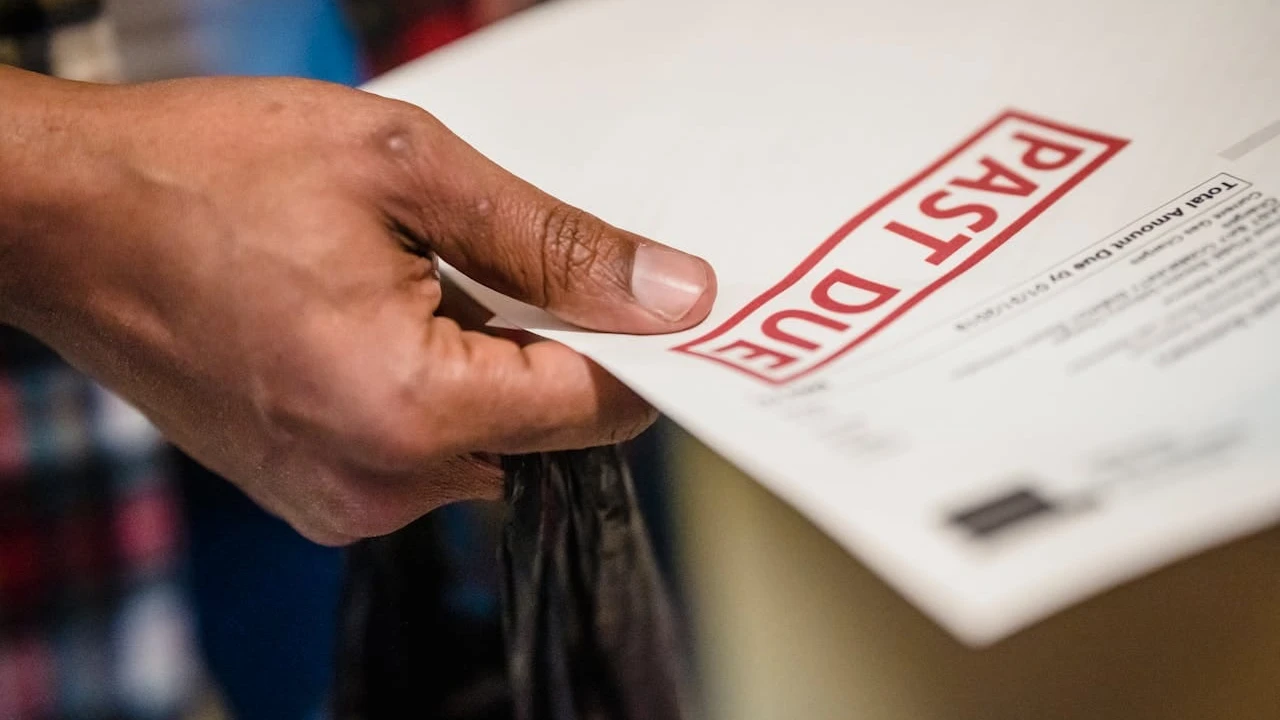5 Common Savings Mistakes to Avoid
Identify and avoid 5 frequent mistakes that can hinder your savings progress and financial goals.

5 Common Savings Mistakes to Avoid
Hey there, future financial wizard! We all want to save money, right? Whether it's for a dream vacation, a new car, a down payment on a house, or just a comfy retirement, building up that savings nest egg is a top priority for many of us. But sometimes, despite our best intentions, we fall into common traps that can seriously derail our progress. It's like trying to run a marathon with your shoelaces tied together – you might start strong, but you're bound to trip up eventually. So, let's untie those laces and talk about five common savings mistakes that people often make, and more importantly, how you can steer clear of them. We'll even throw in some practical tips and product recommendations to help you on your way. Ready? Let's dive in!
Mistake 1 Not Having a Clear Savings Goal
This might sound super basic, but you'd be surprised how many people just say, 'I want to save money,' without actually defining what that money is for. It's like setting off on a road trip without a destination. You might drive around for a bit, but you'll probably just end up back where you started, or worse, run out of gas in the middle of nowhere. Without a clear goal, your savings efforts can feel aimless, making it easy to dip into your funds for non-essential purchases.
Why a Clear Goal Matters for Your Savings Journey
When you have a specific goal – say, $10,000 for a down payment on a car in 18 months – it gives your savings a purpose. This purpose acts as a powerful motivator. When you're tempted to splurge on something you don't really need, that clear goal can pop into your head and remind you why you're saving. It transforms saving from a chore into an exciting journey towards something you truly desire.
How to Set Effective Savings Goals and Stay Motivated
The key here is to make your goals SMART: Specific, Measurable, Achievable, Relevant, and Time-bound. Instead of 'save more money,' try 'save $5,000 for a trip to Thailand by December 2025.' This makes it concrete and trackable.
Tools and Apps for Goal Setting and Tracking
- Personal Capital: This free tool allows you to link all your financial accounts and see your net worth, track your spending, and set financial goals. It's great for a holistic view of your finances.
- Mint: Another popular free budgeting app, Mint helps you categorize your spending, create budgets, and set savings goals. It sends you alerts to keep you on track.
- YNAB (You Need A Budget): While it has a subscription fee, YNAB is fantastic for giving every dollar a job. It helps you allocate funds towards your specific savings goals and prevents overspending.
Scenario: Let's say you want to save $3,000 for a new laptop in 6 months. With Mint, you can set this as a goal, and the app will tell you that you need to save $500 per month. It will then track your progress and show you how close you are to hitting your target. This visual progress can be incredibly motivating.
Mistake 2 Not Automating Your Savings
If you're still manually transferring money to your savings account every month (or worse, whenever you remember), you're making it harder than it needs to be. Life gets busy, and it's easy to forget or, let's be honest, find an excuse not to save. This is where automation becomes your best friend.
The Power of Automation for Consistent Savings
Automating your savings means setting up automatic transfers from your checking account to your savings account on a regular basis – usually right after you get paid. This 'set it and forget it' approach ensures that you're consistently contributing to your goals without having to think about it. It's like paying yourself first, before you even have a chance to spend the money.
How to Set Up Automatic Transfers and Make Saving Effortless
Most banks offer this feature. Simply log into your online banking portal, find the 'transfers' or 'automatic payments' section, and set up a recurring transfer. You can choose the amount, frequency (weekly, bi-weekly, monthly), and the date. Aim for the day you get paid so the money is moved before you have a chance to spend it.
Banks and Platforms Offering Seamless Automation
- Ally Bank: Known for its high-yield savings accounts, Ally makes it super easy to set up recurring transfers. They also offer 'buckets' within your savings account, so you can allocate funds to different goals.
- Discover Bank: Similar to Ally, Discover offers competitive interest rates and straightforward automation features.
- Chime: A popular online-only bank, Chime offers features like 'Save When I Get Paid' (automatically transfers a percentage of your paycheck to savings) and 'Round Ups' (rounds up purchases to the nearest dollar and saves the difference).
- Acorns: This micro-investing app automatically invests your spare change by rounding up your purchases. While it's investing, it's a great way to automate small contributions. (Subscription fee applies, typically $3-$5/month).
Scenario: You get paid bi-weekly. You decide to automatically transfer $100 from your checking to your savings account every payday. Over a year, that's $2,600 saved without you even thinking about it! If you use Ally Bank, you can even create a 'Vacation Fund' bucket and direct those $100 transfers specifically there.
Mistake 3 Not Having an Emergency Fund
This is a big one. Life throws curveballs – unexpected car repairs, medical emergencies, job loss. Without an emergency fund, these curveballs can completely derail your financial progress, forcing you to dip into long-term savings, go into debt, or even sell investments at a loss. An emergency fund is your financial safety net.
The Importance of an Emergency Fund for Financial Security
Think of your emergency fund as insurance for your finances. It's there to cover unexpected expenses without forcing you to compromise your other financial goals. It provides peace of mind, knowing that you're prepared for the unexpected.
How Much to Save for Emergencies and Where to Keep It
Financial experts generally recommend having 3 to 6 months' worth of essential living expenses saved in an easily accessible, separate savings account. If you have an unstable income or dependents, aiming for 6-12 months might be even better.
Best Accounts for Your Emergency Fund
Your emergency fund should be in a high-yield savings account (HYSA). Why? Because it offers a better interest rate than a traditional savings account, meaning your money grows a little faster, but it's still liquid (easily accessible) when you need it. Avoid putting it in investments that can fluctuate in value, as you don't want to be forced to sell when the market is down.
- Marcus by Goldman Sachs: Offers competitive HYSA rates with no monthly fees or minimums. Easy online access.
- Synchrony Bank: Another strong contender for HYSAs, often with very competitive rates and good customer service.
- Capital One 360 Performance Savings: A popular choice with good rates and the convenience of being part of a larger bank.
Scenario: Your monthly essential expenses (rent, food, utilities, transportation) total $2,000. You should aim for an emergency fund of $6,000 to $12,000. You set up an automatic transfer of $200 every payday to your Marcus by Goldman Sachs HYSA specifically for your emergency fund. This way, it's separate from your other savings goals and earning a decent return.
Mistake 4 Not Budgeting or Tracking Spending
You can't manage what you don't measure. If you don't know where your money is going, it's incredibly difficult to identify areas where you can cut back and save more. Many people avoid budgeting because it sounds restrictive or complicated, but it's actually a powerful tool for financial freedom.
The Role of Budgeting in Identifying Savings Opportunities
Budgeting isn't about deprivation; it's about awareness and control. When you track your spending, you might be surprised to find out how much you're spending on things like daily coffees, subscriptions you don't use, or impulse buys. Once you see these patterns, you can make conscious decisions about where to reallocate your money towards your savings goals.
Effective Budgeting Methods and Tools for Financial Clarity
There are many budgeting methods, so find one that works for you:
- The 50/30/20 Rule: 50% of your income for needs, 30% for wants, and 20% for savings and debt repayment. Simple and effective.
- Zero-Based Budgeting: Every dollar has a job. You allocate all your income to expenses, savings, or debt repayment until your income minus your outflows equals zero.
- Envelope System: For cash users, you allocate cash into physical envelopes for different spending categories.
Top Budgeting Apps and Software for Expense Tracking
- Mint: (Mentioned before) Excellent for categorizing transactions and visualizing your spending.
- YNAB (You Need A Budget): (Mentioned before) Great for detailed budgeting and giving every dollar a purpose. Its 'four rules' help you manage your money proactively.
- PocketGuard: Helps you see 'how much you have left to spend' after bills and savings are accounted for. It's very user-friendly.
- Personal Capital: (Mentioned before) While more focused on investments, its budgeting features are robust for tracking spending across all accounts.
Scenario: You start tracking your spending with Mint. You discover you're spending $150 a month on various streaming services and another $100 on eating out for lunch. By cutting down on some subscriptions and packing your lunch twice a week, you free up $100-$150 a month that can now go directly into your savings account. Mint will show you these insights clearly.
Mistake 5 Not Reviewing and Adjusting Your Savings Plan
Your financial life isn't static, so your savings plan shouldn't be either. Life changes – you might get a raise, have a new expense, or achieve a savings goal. If you don't regularly review and adjust your plan, it can quickly become outdated and ineffective.
The Importance of Regular Financial Check-ups for Savings Success
Think of your savings plan like a garden. You don't just plant seeds and walk away; you need to water it, weed it, and prune it regularly to ensure it flourishes. Similarly, regular financial check-ups allow you to assess your progress, identify any roadblocks, and make necessary adjustments to keep your savings growing.
When and How to Adjust Your Savings Strategy
Aim for a monthly or quarterly review. Look at your budget, your savings progress, and your overall financial goals. Ask yourself:
- Am I still on track to meet my goals?
- Have my income or expenses changed significantly?
- Are there new savings opportunities I can take advantage of?
- Should I increase my automatic savings contributions?
Platforms for Comprehensive Financial Review and Planning
- Personal Capital: Excellent for a holistic view of your finances, including investments, debts, and savings. It helps you see how all pieces fit together.
- Fidelity Full View: If you have accounts with Fidelity, their Full View tool allows you to link external accounts and get a comprehensive financial picture.
- Empower (formerly Personal Capital): Offers free financial tools and paid advisory services. Their free dashboard is powerful for tracking net worth and investments.
Scenario: You've been diligently saving $200 a month. After a year, you get a promotion and a significant raise. During your quarterly review using Personal Capital, you notice your income has increased, but your savings contributions haven't. You decide to increase your automatic transfer to $300 a month, accelerating your progress towards your goals. Personal Capital's net worth tracker will show you the positive impact of this adjustment over time.
So there you have it – five common savings mistakes and how to avoid them. Remember, building wealth is a marathon, not a sprint. It requires consistency, discipline, and a willingness to learn and adapt. By setting clear goals, automating your savings, building an emergency fund, tracking your spending, and regularly reviewing your plan, you'll be well on your way to financial mastery. Keep at it, and your future self will thank you!
:max_bytes(150000):strip_icc()/277019-baked-pork-chops-with-cream-of-mushroom-soup-DDMFS-beauty-4x3-BG-7505-5762b731cf30447d9cbbbbbf387beafa.jpg)






